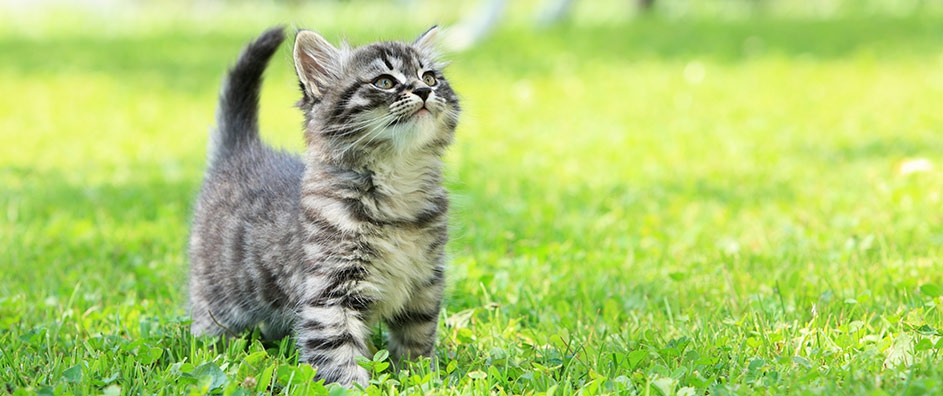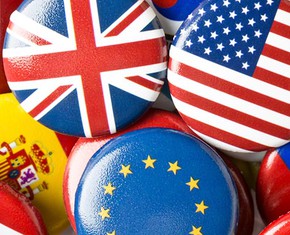The views expressed in our content reflect individual perspectives and do not represent the authoritative views of the Baha'i Faith.
What is it about the web that makes cute baby animals so popular?
If you’re not familiar with this phenomena—say, perhaps, you’re just now coming out of a coma that began in 1992—then you may want to take a fresh look at social media. There, you’ll undoubtedly experience post after post with pictures of terminally cute, fuzzy little creatures that make you want to go “Awww…”
You’ll see puppies, kittens, piglets, fawns, joeys, cubs, chicks, kits, calves and colts. Many of them look like they’re smiling, or playing, or just having the most joyous life imaginable. Gamboling through green grass, goofy expressions on their faces, they’re popping up just about everywhere. The most popular posts seem to involve mixed-species cute baby animal interaction—a fawn nuzzling a kitten, for example, or a turtle giving a puppy a free ride.
So the other day a friend of mine asked, on Facebook, “What’s up with all the cute baby animals? Is social media effective for real and meaningful conversations or is it just for the mundane?”
As someone who writes for the web every day, I’ve wondered the same thing. Puppies and kittens and baby penguins and pictures of sleeping animals of different species curled up next to one another all have their place, sure–but you would think, or at least hope, that an instantaneous global communications system, available to humanity for the first time in our history, would produce a little more than just warm cuddly cuteness. You would hopefully think that it could produce real and meaningful conversations—wouldn’t you?
 Don’t get me wrong—I’m not trying to be cynical here. I have nothing against cute baby animals. I love puppies. Probably the best times I ever had as a kid? Getting a new pup. Even as an adult, my wife and sons gave me an 8-week-old Golden Retriever puppy for my birthday one year, and I immediately overdosed on cuteness. That little puppy, who we named Odie (and who quickly became a very big dog), loved to play. I spent many a fun day wrestling, chasing, being chased, playing fetch and just generally having a great time with Odie. When he grew up he failed dog obedience school (twice), but he always loved to play.
Don’t get me wrong—I’m not trying to be cynical here. I have nothing against cute baby animals. I love puppies. Probably the best times I ever had as a kid? Getting a new pup. Even as an adult, my wife and sons gave me an 8-week-old Golden Retriever puppy for my birthday one year, and I immediately overdosed on cuteness. That little puppy, who we named Odie (and who quickly became a very big dog), loved to play. I spent many a fun day wrestling, chasing, being chased, playing fetch and just generally having a great time with Odie. When he grew up he failed dog obedience school (twice), but he always loved to play.
Want to meet people? Go get a Golden Retriever puppy, and take him anywhere. I swear, it works like a giant magnet, drawing people who just can’t help but want to pet the pup. Walk around your neighborhood, and you’ll immediately discover the smiling faces of all the neighbors you’ve never met before, guaranteed. If you’ve ever had a cute affectionate little fuzzy ball of joy like Odie, you probably already understand that the virtual world of social media isn’t that different from the real world—people are just naturally attracted to cute baby animals. Infants, children, teenagers, adults, seniors—they all love ‘em some puppies.
Why is that? And what can we learn from this seemingly endless online obsession with fuzzy little mammals? Can we figure out anything insightful, profound or interesting as a result? Does our innate attraction to cute baby animals have anything at all to do with our souls?
Let’s explore those questions, first with a quote from the Baha’i teachings:
…show forth the utmost consideration to the animal, and… be even kinder to him than to your fellow man. …to blessed animals the utmost kindness must be shown, the more the better. Tenderness and loving-kindness are basic principles of God’s heavenly Kingdom. Ye should most carefully bear this matter in mind. – Abdu’l-Baha, Selections from the Writings of Abdu’l-Baha, p. 158.
“Tenderness and loving-kindness,” Abdu’l-Baha says, “are basic principles of God’s heavenly Kingdom.” If you’ve ever seen an infant child snuggle with a stuffed animal or instinctively reach out to touch a soft puppy or kitten, you already know that tenderness and loving-kindness have an important place in the spiritual life of even the youngest human beings. Cute baby animals just seem to bring it out of us.
How does that happen?
Most infants feel that sense of tenderness and loving-kindness from the very first moments of our lives here on Earth. When a mother and father welcome a new baby into the world, the newborn experiences the tender, gentle warmth of the family’s abiding embrace. From the child’s initial breaths, love appears unbidden and unearned. This love for our children allows them to love, too. Some researchers have done studies that indicate our sense of altruistic loving-kindness is innate, a human trait in every baby.
In the Baha’i writings, Baha’u’llah beautifully expresses that universal theme. Here, in The Hidden Words, Baha’u’llah speaks in the voice of the Creator about the love of God for each tiny person:
Out of the wastes of nothingness, with the clay of My command I made thee to appear, and have ordained for thy training every atom in existence and the essence of all created things. Thus, ere thou didst issue from thy mother’s womb, I destined for thee two founts of gleaming milk, eyes to watch over thee, and hearts to love thee. Out of My loving-kindness, ’neath the shade of My mercy I nurtured thee, and guarded thee by the essence of My grace and favor. And My purpose in all this was that thou mightest attain My everlasting dominion and become worthy of My invisible bestowals. – p. 32.
So we can safely conclude, given the long history of our continued existence as a species, that our natural love for tiny newborns has kept the human race going for millennia.
Adults with wholesome, well-adjusted emotional lives automatically want to shower their love on infants, whether human or animal. We have it built into our very beings from birth. That’s probably the key to our emotional reactions to cute baby animals–and it also says something fascinating about our inner reality. It means that we deeply feel and understand the beautiful potential embodied in each new life—and it means that love, once given, asks to be given again. We know, deep in our souls, that our own childhoods brought us warmth, tenderness and loving-kindness—so we want to pass it on.
















Comments
Sign in or create an account
Continue with Googleor